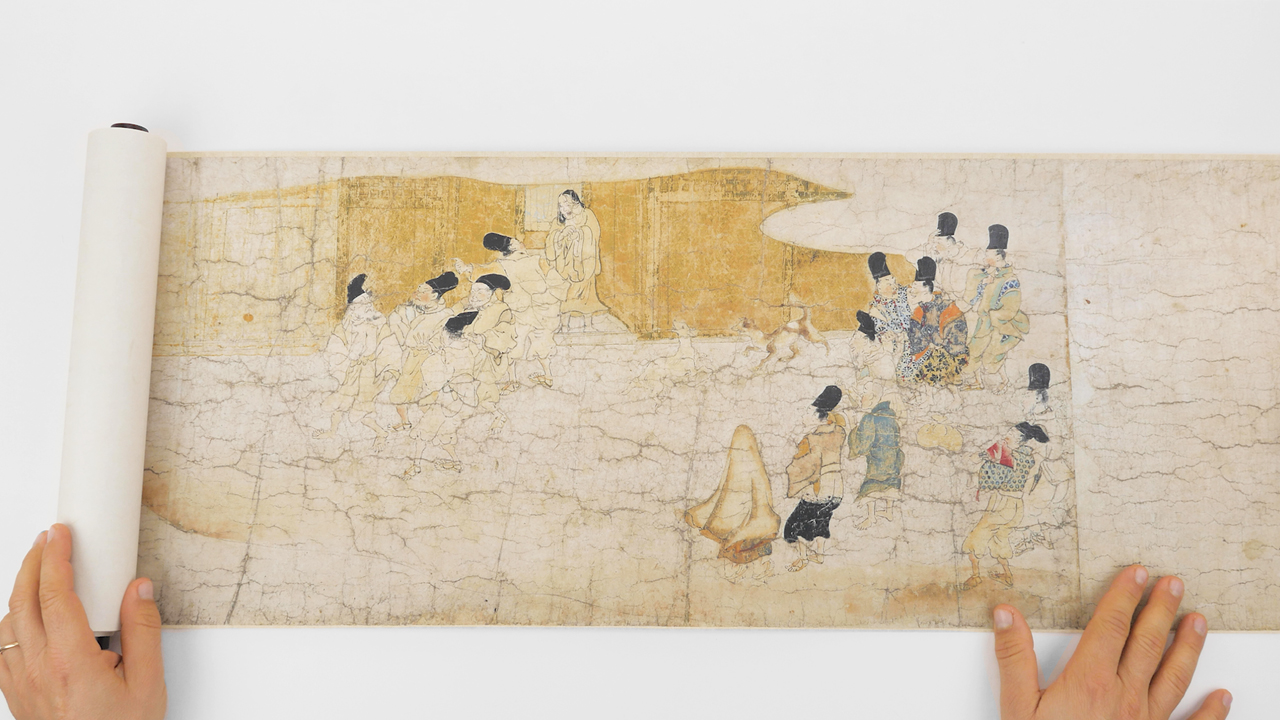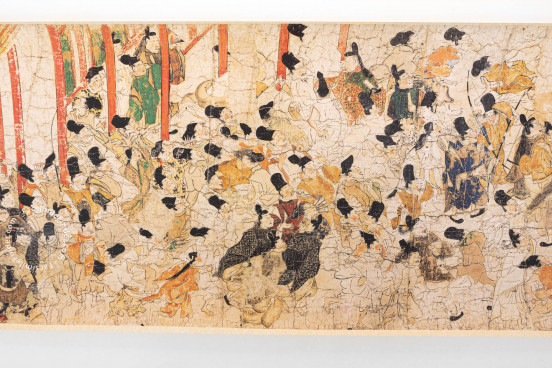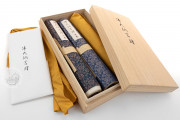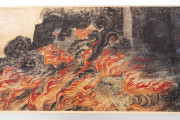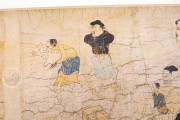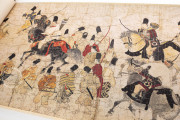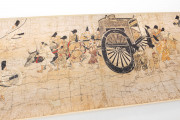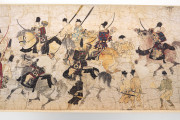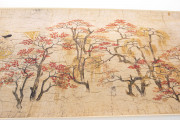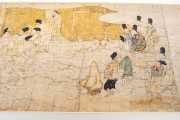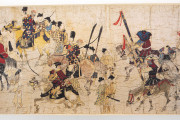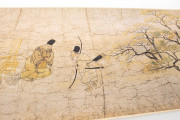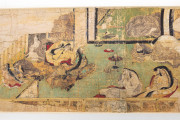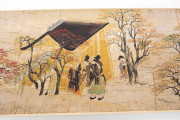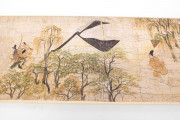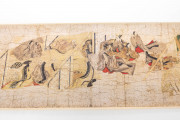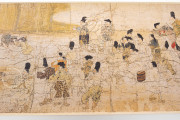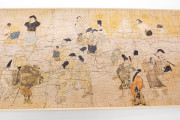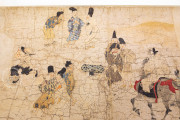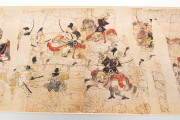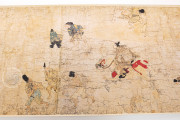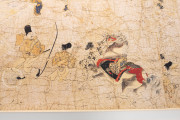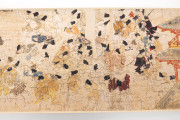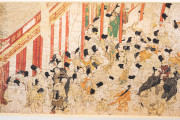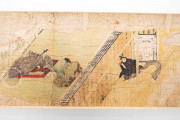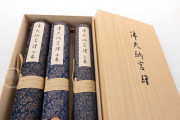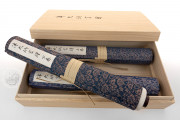The Ban Dainagon Ekotoba is considered one of the four major scrolls of Japan, and is viewed as a representative work within the genre of scroll paintings. The story depicts the aspirations and the downfall of a politician who lived in twelfth-century Japan. Due to the historical nature of the content, the scroll takes a more realistic approach than other works of its time. In depicting the story, the painter used his expressive capabilities to create an intriguing structure of scene-to-scene developments that demonstrates the particular attractiveness of illustrated scrolls.
The scroll was likely produced in the latter half of the twelfth century by Tokiwa Mitsunaga, a court painter serving the retired Emperor Goshirakawa. Tokiwa Mitsunaga dramatically represented the actions of state counselor Tomo no Yoshio, who set fire to a Kyoto gate and blamed his rival for the disaster.
A Masterpiece of Suspense and Animation
Various elements of the Ban Dainagon Scroll reveal the artist's efforts to heighten the story's interest and represent it dramatically. One of the main design features the artist adopted was to compose scenes so that the story formed a natural progression for the viewer and developed over time as the scroll was unrolled, rather than describing each event in terms of how the story took place.
The most important sections of the story—the scene of Tomo no Yoshio setting fire to the Ōtenmon Gate and the scene of his arrest—do not appear in the painting, despite Tomo no Yoshio's role as protagonist in the scroll. This shows how the artist carefully chose to organize visual expression in the scroll. Considered in terms of today's art forms, this technique is similar to the way suspense is created in movies and drama.
The flames that engulf the two-story structures on either side of the Ōtenmon Gate are powerfully expressed. The harmonious blend of delicate charcoal shades makes the black smoke billowing forth seem to be in motion as it is swept up by the wind. The selective use of cinnabar, red, and orange sets the bright red flames aroar, and the crackle of sparks, expressed by the spattering of red pigment, can almost be heard as they burst from the wooden structure.
The cloudy or hazy mass of air that appears in open spaces in the painting tends to catch the eye of the viewer. This technique, referred to as suyari kasumi, is used to highlight key scenes by heightening the dramatic nature of the scene changes. The suyari kasumi often emerges gradually at points in which the story's narrative ends. This use is unobtrusive and blends naturally into the surface of the painting to facilitate a smooth scene transition.
The technique of depicting the same character in different time sequences within the same scene is referred to as iji dōzuhō. This method not only conveys the passage of time, but also creates animation in a two-dimensional medium.
A Tale Based on Real Events
In the third year of Angen (1177), the main palace gates of Ōtenmon, Kaishōmon, and Suzakumon that act as a setting for the scroll, actually did burn down. This probably influenced the scroll's realistic representation of the burning Ōtenmon Gate. We can therefore assume that the date of production of the Ban Dainagon Scroll was around 1177.
The scroll was held within the province of Wakasa (present Fukui Prefecture) during the fifteenth century. During the Edo period, it was owned by the Sakai family of Ohama and recently became the property of the Idemitsu Museum in Tokyo.
We have 1 facsimile edition of the manuscript "Ban Dainagon Ekotoba": Ban Dainagon E facsimile edition, published by Maruzen-Yushodo Co. Ltd., 2003
Request Info / Price
